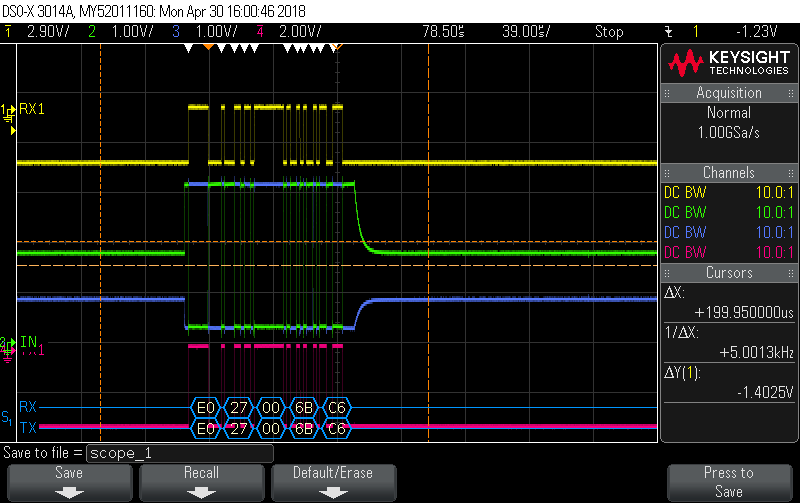Hi we have a major issue wth the SN65HVD75 parts. We have one main board and 32 output boards which each plug into the main board. We are running at 500kBaud.
In normal mode, the program runs well and there are no problems after a few hours.
In Special diagnostic mode which is where we send a lot of data (and there may be a few collisions), the RS485 bus fails after around 5-10 minutes. When failed, we can see that the A bus pulls high to 3.3V and the B bus pulls down to around 0.3V, and the output is wrong - mainly due to the failsafe voltage (where there is no driver on the RS485 line) being the wrong level.
We currently have no termination resistor, and a 10k pull up on A and 10 k pull down on B. The output boards are maybe 25cm from first to the last board.
Another complication is that we have a ground current sense resistor on each Output board (3.3R with 25mA for ~75mV) so that each Output boards see A and B as a slightly negative signal of around -75mV when low.
Any and ll help would be much appreciated. We have spent a lot of time on this issue and managed to get nowhere over the last week.
Are there any erratas or know problems with these chips? Thanks
Here is a screenshot of the RS485 bus in failed mode:
Yellow = R output
Green=A
Blue = B
Pink=?
Below is a screenshot of the RS485 bus in working mode after a power on/off cycle
Yellow = R output
Green=A
Blue = B
Pink=?




